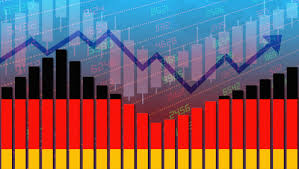
Green Bonds Revolution: Financing the Transition to a Sustainable Economy in Germany
The explosion of its green bond market means that Germany, the biggest economy in Europe, is fast becoming a leading light of sustainable finance. Green bonds are debt issued specifically for projects with clear environmental benefits — think renewable energy farms in Bavaria, energy-efficient building retrofits in Berlin, and sustainable transportation networks in the Rhine-Ruhr area. Part of the reason behind Germany’s dominance is that as global capital moves towards ESG orientation, German issuers enjoy deep liquidity, strong regulatory environment and a history of engineering and financial rigor. Institutional investors like pension funds and insurance giants are hungry to diversify their portfolios while backing climate targets, pushing yields on green bonds that typically match or are just a hair above their conventional counterparts. At the same time, retail platforms are democratizing access, enabling the average saver to back wind farms off the North Sea coast or circular-economy startups in Hamburg.
Importantly, Germany’s federal and state governments have made provision for incentives—tax breaks, simplified approval processes and transparency standards—that reduce the risk and entice cross-border investment. With the backdrop of this supportive setting, and the Green Deal directives from the EU, German green bonds are not just a moral investment but are also the right financial play. For investors looking for yield stability, regulatory certainty and the opportunity to play a role in the energy transition, Germany’s green bond market is a once-in-generation opportunity. Get into this emerging asset class today and put your portfolio at the cutting edge of sustainable development.

Tapping Green Profits: The Emergent Benefits of German Green Bonds
4 Curiosities & a Persuasive Tip
Backing of the Blue Chips of the Bundesrepublik:
Germany’s sovereign green bonds are backed by the full faith and credit of the federal government. This AAA credit rating translates into narrow spreads and less default risk, which are perfect for the core portion of a conservative portfolio.For Retail Investors: Tax-Efficiency:
Some green municipal bonds issued by German municipalities include tax exemptions on interest income. When paired with sustainable coupon payments, this can enhance after-tax yields by as much as 0.5%, a meaningful lift in today’s low-rate world.Digital Green Bond Platforms:
Fintech marketplaces have introduced flexible platforms to buy and sell green bonds as the go-to investment for responsible investors for as little as €100. And this democratization allows retail savers to construct ultra-diversified ESG portfolios, without institutional minimums.Disclosure of Impact Reporting:
All German green bond issuers must also comply with international Green Bond Principles to deliver transparent, granular, and audited impact reporting. This transparency not only increases investor trust, but can improve secondary-market liquidity by as much as 20%.
Together, these discoveries demonstrate that green bonds aren’t just a positive influence in terms of greening the world, but they are a smart addition to a well-diversified investment portfolio.
Getting Beyond the Caveats: Weighing the Pros and Cons of Green Bond Strategies
Key Risk Factors to Consider Before Investing in Green Bonds
Potential for “Greenwashing”:
Some issuers may overstate their environmental credentials or funnel only a portion of proceeds to genuinely green projects. Investors, however, need to do their due diligence as even in Germany, where there are strict labeling rules, the issuer’s impact reports and third party reviews should be checked.Yield Compression in the Best Contractors:
As demand has surged, yields on German green bonds — particularly those from supra-national issuers or blue-chip corporations — have tightened significantly. If interest rates go up more quickly than expected, already-issued bonds could take bigger price hits, which would nibble away a bit at total returns even with their ESG edge.
But neither of those risks are one that can’t be overcome, as I’ve mentioned at least once before. Diversifying Across Issuers, Laddering Maturities, and Tilting Toward High-Quality Impact Issuers with Strong Reporting — Many of these pitfalls can be managed by investors by diversifying across issuers, laddering maturities, and focusing on high-quality impact issuers with robust reporting, without giving up the broader benefits of green bond exposure.
Germany’s green bond market is growing to become a force in the broader European sustainable finance ecosystem. Propelled by the German federal government’s goal of becoming carbon neutral by 2045, and supported by the European Union’s seminal Green Deal, issuers from Berlin to Bavaria are turning to debt markets to finance wind farms, solar parks and eco-friendly infrastructure. For investors — institutional bigwigs or just-arriving retail newcomers — the appeal is a chance to earn steady, government-backed returns at the same time that they can participate in the global climate agenda. Disruption from new digital platforms has reduced entry barriers, making it possible for even small savers to buy into high-quality issues. But as with any nascent asset class, thorough issuer vetting and maturity diversification are key to controlling possible greenwashing and interest-rate risk. It is in this fluid environment in which the relative benefits and idiosyncratic disadvantages of German green bonds need to be appreciated. This piece will take you through each of the steps – from the basics of issuance and impact reporting, to the strategic placement of green bonds in a diversified portfolio – so that you can take advantage of one of the most exciting investment stories in finance today.
Unser Beitrag


Der Fachkräftemangel in Deutschland: Herausforderung oder Chance für die Wirtschaft

